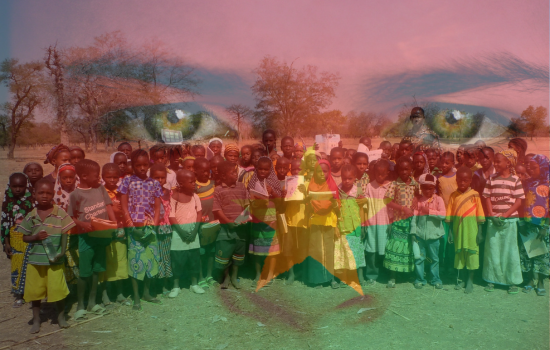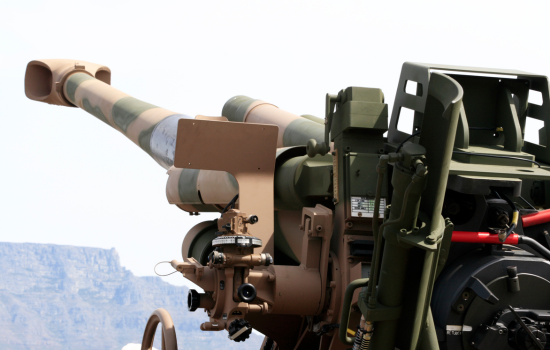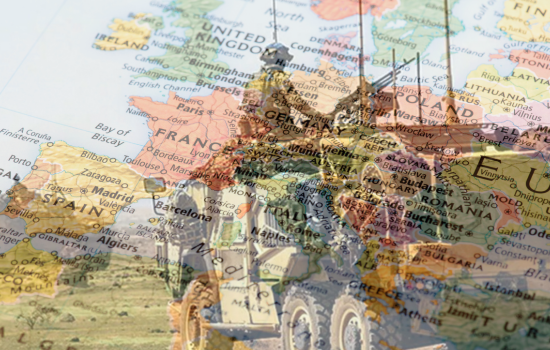The Raging Jihad
While there is nothing unusual about bin Laden’s periodic long spells of silence, the silence of Zawahiri is unusual. He never misses an opportunity to taunt the US over its botched-up operations or to comment on important developments affecting the Ummah. His silence on the botched-up raid on a madrasa in the Bajaur agency of Pakistan on October 30, 2006, and on the US Congressional elections and the speculation about the Iraq Study Group is intriguing. No satisfactory explanation has so far been forthcoming. (Please see my earlier article titled DARGAI & CHENAGAI: WAITING TO HEAR ZAWAHIRI’S VERSION)
Winter has set in in Southern and Eastern Afghanistan and in the adjoining Pakistani tribal areas. One would have normally expected a decline in the operations of the Neo Taliban against the NATO and the Afghan forces due to the onset of winter. Surprisingly, this has not happened. The Neo Taliban, Gulbuddin Heckmatyar’s Hizb-e-Islami (HEI) and Al Qaeda have continued to maintain a high level of activity in Southern and Eastern Afghanistan despite the onset of winter. It is the Neo Taliban, which is in the forefront of the fighting, with the supportive role of the HEI and Al Qaeda being minimal.
The continuing high level of activities in the Pashtun majority areas of Afghanistan despite the onset of winter is a disturbing indicator that the Neo Taliban has managed to set up a permanent or semi-permanent set up in the rural areas of Southern and Eastern Afghanistan and is now in a position to carry on its anti-NATO operations at a high level of intensity till the end of winter even without fresh reinforcements and supplies from its rear bases in Pakistani territory.
In terms of the fatal casualties suffered by the NATO forces, the ground situation in Afghanistan is not yet as dramatic as that in Iraq. Hardly 17 NATO forces have been killed by the Neo Taliban suicide volunteers since the beginning of 2006.But in terms of the hundreds of casualties suffered by Afghan civilians and security forces and the motivation, resilience and fighting skills displayed by the Neo Taliban, the situation is increasingly disturbing. According to a British Broadcasting Corporation report of December 6, 2006, in the last eight days there have been six suicide attacks by the Neo Taliban in the Kandahar area.
The NATO forces’ counter-Taliban strategy has been more reactive than proactive—-wait for the Neo Taliban to come and attack them and, when they do, react with overwhelming force inflicting large casualties. They seem to be hoping that a steady rate of heavy attrition inflicted on the Neo Taliban through this tactics might ultimately tire it out. This does not appear to be happening. One instance of a pro-active raid undertaken by the British forces on a Neo Taliban stronghold in the Helmand province on December 5, 2006, ended in a failure. The well-entrenched Neo Taliban managed to beat back the British despite the use of air strikes and heavy artillery by the British.
The Neo Taliban is in increasing control of the rural areas in Southern and Eastern Afghanistan—-with the control of the NATO and Afghan forces confined to the towns. Even this control is not quite satisfactory. The de facto control of the towns by the NATO forces has not prevented the Neo Taliban from repeatedly infiltrating into them and successfully organising hit and run raids and acts of suicide terrorism.
Pakistan’s President Gen. Pervez Musharraf has ignored pressure from the US, the UK and the Hamid Karzai Government of Afghanistan to act against the Neo Taliban sanctuaries in Pakistani territory and arrest its leaders operating from there. He has become an apologist and a spokesman for the Neo Taliban—-repeatedly arguing that the NATO should come to terms with the reality of Neo Taliban and give it a role in the governance of Afghanistan in return for its helping in the restoration of normalcy. This is a dangerous suggestion, which if implemented, would hand over Afghanistan on a platter back to the Neo Taliban and Al Qaeda. The NATO should not fall into the Musharraf trap.
IRAQ
The US continues to find itself between the devil and the deep sea in Iraq. It is like a man who has unthinkingly mounted a tiger to ride. It is dangerous to continue riding and it is even more dangerous to dismount. How to save Iraq from the depredations of international jihadi terrorists of Al Qaeda brand on the one side and seeping Shia extremists of Iranian inspiration on the other? The victory of either will mean continuing instability and threat to peace and security There will be no peace and security unless and until both are countered effectively—-politically, ideologically and professionally. Professionally does not necessarily mean militarily. It means through a mix of covert, para-military and military methods—-with the military component more sophisticated than at present.
Unfortunately, the Iraq Study Group of the US, headed by Mr. James Baker, former US Secretary of State, has failed to address this question. Its report is a ill-cooked hotch-potch of suggestions lacking coherent analysis. The only new recommendation is the involvement of Iran and Syria in the search for a resolution. It is like Gen. Musharraf’s suggestion for the involvement of the Neo Taliban in the search for a solution in Afghanistan.
Iraq is in the grip of a four-in-one war—- the US-led forces vs the Al Qaeda-led terrorists; the Iraqi opponents of the occupation vs the US-led forces; the Iraqi nationalists vs the Iraqi Quislings; and the Shias vs the Sunnis. There cannot be an end to the blood-letting in Iraq without the co-operation of the Iraqi Sunnis. The Sunnis might constitute only 20 per cent of the population, but they are responsible for nearly 75 per cent of the violence. They have shown a ferocity, self-motivation and determination much, much beyond their number. Their anger has to be mitigated and their co-operation enlisted to isolate the foreign terrorists on the one side and the Iranian cat’s paw on the other.
The Iraq Study Group has left it to the present Iraqi Government led by Mr. Nuri al-Maliki to work for a reconciliation with the Sunni Arabs. It won’t be able to do it. It is hated by the Sunni Arabs as strongly as they dislike the Americans. It is looked upon by large sections of the people—Sunnis as well as Shias— as the Government of the Green Zone. An army raised, trained and controlled by it will not be able to either put down or placate the Sunnis.
Reducing the anger of the Iraqi Sunnis and making them part of the solution has to be the task of the international community in general and the regional Sunni powers in particular. More important than interaction with Iran and Syria is interaction with the Iraqi Sunni leaders including the leaders of the Baath party. The USA’s original sin was to have prematurely transferred power to a group of Shia leaders, who are largely surrogates of Teheran. It will be compounding that sin by making the Shia-dominated Government responsible for dealing with the Sunnis. They will make a blood-bath of the Baathist leaders and their supporters.
While there would be no harm in trying to enlist the good offices of Iran and Syria, it would be an illusion to think that they would be able to deliver or even try to. This is the time to give the Sunnis of Iran a role in helping their Sunni brethren in Iraq. This is also the time to give the Mujahideen-e-Khalq a role in countering any over-ambitious role by Iran. This is also the time to encourage the reformist forces in Iran to re-assert themselves.
Unfortunately, US policy-makers and analysts have not been able to get out of the military box into which their minds have got stuck. Most of the so-called new ideas and suggestions coming out of them are permutations and combinations of various military options. They are juggling with troop figures and time-tables.
While briefing the media on their report at Washington on December 6, 2006, the members of the Iraq Study Group described it as the last available option to make Iraq work. Juggling with figures and time-tables won’t make Iraq work. Nor will giving the present Government in Baghdad total responsibility.
Iraq is in such a mess that one is doubtful whether any exclusively military option can make Iraq work. At least non-military options plus a healthy dose of humility might. Humility means the US admitting its wrong-doings to the Iraqi Sunnis, particularly the Baathists, and seeking their co-operation.
SOUTHERN THAILAND
There is an undeclared, but unmistakable jihad going on in the three Muslim-majority provinces (Pattani, Yala and Narathiwat) of Southern Thailand—-which is getting bloodier and bloodier and messier and messier. The jihad in Southern Thailand has reportedly caused over 1,800 fatalities since October, 2004, as against 3,200 in India’s Jammu & Kashmir during the same period. The high rate of fatalities in J&K is due to the involvement of a large number of Pakistani mercenaries. Hopes that the ouster of the former Prime Minister, Mr. Thaksin Shinawatra, who was projected by his critics as the red rag to the jihadi bull, would bring down the temperature and bloodshed have been belied so far.
So too hopes that the advent to power of a Muslim General ( General Sonthi Boonyaratglin) enjoying the total confidence of the highly respected Buddhist monarch and of a contrite retired General (Surayud Chulanont ) as the caretaker Prime Minister would make the terrorists more amenable to reason have been equally belied. Overtures by the new rulers of the country to the jihadi terrorist leaders to come to the table for talks have remained without response.
The level of violence is as intense as before the fall of Mr. Shinawatra—-if not more intense. Not a day passes without a terrorist attack. There were reportedly 10 deaths on December 6, 2006, alone.
The defining characteristics of the terrorism in Southern Thailand have more in common with what has been going on in the Indian sub-continent than in the rest of South-East Asia. Its modus operandi (MO) are more reminiscent of those followed by the Harkat-ul-Jihad-al-Islami (HUJI) of Bangladesh and the anti-Shia Lashkar-e-Jhangvi (LEJ) of Pakistan than of Jemaah Islamia (JI). Its ideology and strong religious orthodoxy have much in common with those of the Neo Taliban.
Continuous and sustained violence instead of sporadic acts; avoidance of mass casualty terrorism; targeted killings of kafirs—mainly Buddhists— as well as Muslims perceived as collaborating with the kafirs; attacks on centres of non-Muslim cultural influence such as schools; a mix of hand-held weapons and improvised explosive devices; use of two member teams in two wheelers to kill and get away; avoidance of claims; ability to operate autonomously in numerous small cells without the need for constant co-ordination by a command and control; avoidance of over-dependence on modern means of communications to reduce their vulnerability to detection by technical means etc. The HUJI in Bangladesh avoids attacks on foreigners, including foreign tourist infrastructure. So too the jihadi terrorists of Southern Thailand.
The Thai authorities are still groping in the dark in their efforts to build a coherent picture of the terrorist network, its leadership and its external linkages. Intelligence flow has been weak due to difficulty in recruiting human sources from the Muslim community, inability to detect sleeper cells and capture their members for interrogation and limited flow of technical intelligence due to the terrorists’ avoidance of sophisticated means of communications.
Investigation of committed acts of terrorism is equally weak. Successful investigations add to the data base and help in future prevention. With the investigations continuing to be poor, the data base is anything but comprehensive. Police-community relations and public co-operation are poor.
Pre-conceived ideas that what has been happening since 2004 is a repeat of what had happened in the 1980s and the denial mode, which inhibits a detailed investigation of possible external links either with the jihadis in other countries of South-East Asia or in the Indian sub-continent, have come in the way of adequate analysis and follow-up enquiries.
Questions remain unanswered or unfollowed up—-why so many Thai Muslims have been going to Pakistani madrasas? Are they going legally after obtaining a no objection certificate from the Thai authorities or illegally? Do they go individually or are they being motivated by some organisation to go? Who meets their expenses? What is the background of the madrasas they join? Are they run by any of the known jihadi terrorist organisations? How many of the Thai students in the Pakistani madrasas are from Thailand and how many are from the Thai diaspora in the Gulf? What do they do after they complete their education? Why did a Pakistani newspaper report in 2005 that the decision to launch a jihad in Southern Thailand was taken at a secret meeting held by the Pattani Muslims in Pakistan etc etc. There are any number of such questions, which need to be seriously investigated.
If the Thai authorities won’t, who will?






